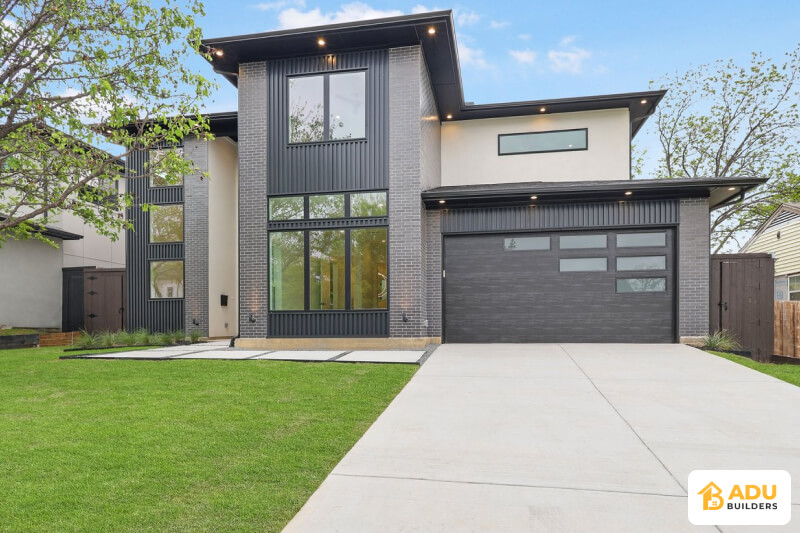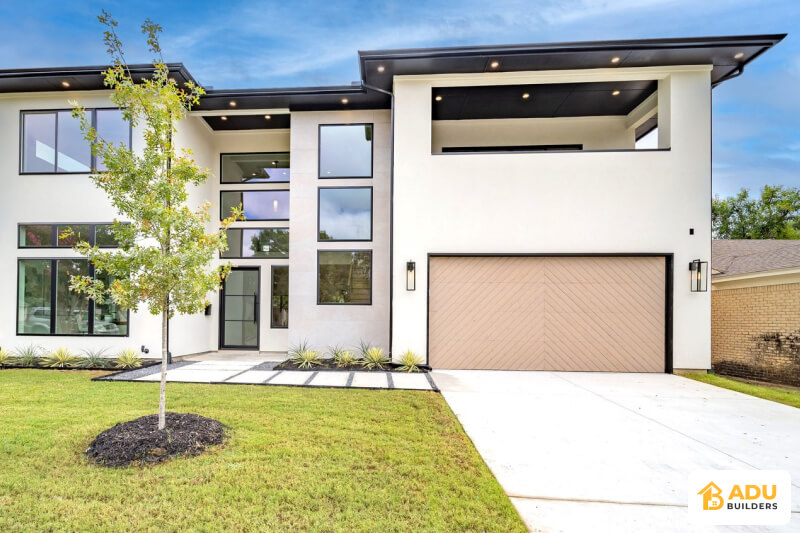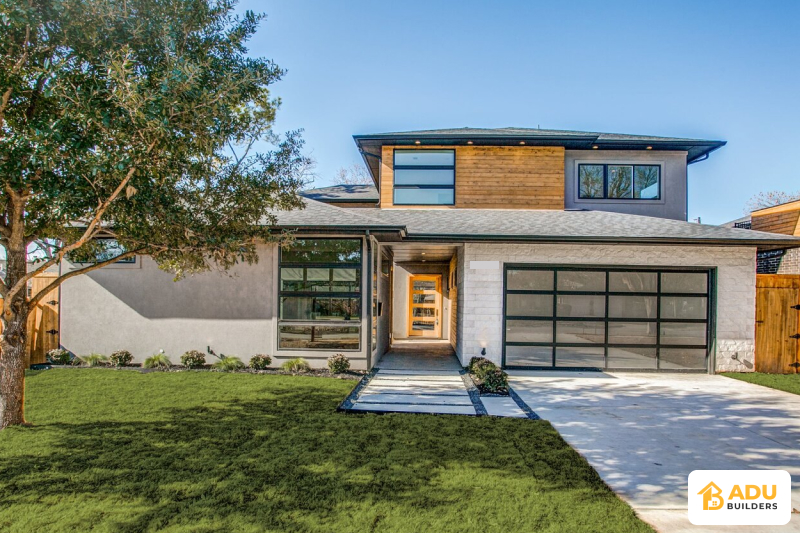Special zoning regulations are in place for ADU construction in the city of Ventura. Permission to build ADUs in residential areas is allowed. Each zone has different rules that govern the size and location of the ADU. ADUs are allowed in core residential areas, but not in commercial and industrial areas. All ADUs are required to comply with the city’s development standards.

The size of the ADU depends on the size of the plot. Smaller sized ADUs can be made in smaller plots. Large ADUs are allowed to be built in large plots. The size of the ADU is decided according to the size of the main house. The minimum size of the ADU can be 150 square feet and the maximum size can be 1,200 square feet.
| Lot Size | Single-Family (Maximum Floor Area Allowed) | Duplex and Multi-Family (Maximum Floor Area Allowed) |
| 4,500 | 1,000 sq ft | 700 sq ft |
| 6,500 | 1,300 sq ft | 900 sq ft |
| 9,000 | 1,600 sq ft | 1,100 sq ft |
| 13,000 | 2,200 sq ft | 1,400 sq ft |
| 18,000 | 2,800 sq ft | 1,800 sq ft |
The height of the ADU cannot exceed the height of the main house. The maximum height of a single-storey ADU can be up to 16 feet. The maximum height for a two-storey ADU has been set at 25 feet. The total height is decided by combining the slope of the roof and additional architectural elements. These limits apply to all residential areas.
The percentage of total construction area on the plot is decided by the rules. The total coverage of the main house and ADU together should not exceed 50%. It is necessary to leave enough space for open space and green area. Building coverage is calculated according to plot size. These rules are important for drainage and environmental protection.
The ADU can be installed behind or next to the main house. The main entrance of the ADU should not be on the road side. Proper distance must be maintained from neighboring properties. The location of the ADU should be such that it does not affect the privacy of the surrounding houses. It is also necessary to take care of the convenience of parking and utility connections.
Single-Family Homes:
Duplexes and Multi-family:
The exterior design of the ADU should match the main house. The color of the walls, the material of the ceiling and the styling of the windows should be the same. Exterior lighting should not disturb neighbors. The ADU should be beautifully surrounded by landscaping. The exterior décor should reflect the local architecture.
An additional parking space is required for the ADU. The parking lot should be easily accessible from the public road. Alternative parking will must be arranged when the garage is converted into an ADU. The parking area should have a paved and level surface. Sufficient space must be left for vehicular movement.
It is mandatory to leave a minimum free space around the ADU. A setback of at least 20 feet must be kept at the front. A setback of 5 feet at the back and sides is required. These setbacks ensure accessibility of emergency services. Privacy can be increased by planting trees and plants in the buffer zone.
There is a rule of minimum plot size for building ADUs in the RF zone. The area of the plot should be at least 4,000 square feet. Large ADUs are allowed to be built in large plots. Special approval will be required if the plot size is irregular. The size of the ADU will be calculated based on the total area of the plot.
| Zone | Minimum Lot Area |
| R-18 | 4,500 sq. ft. |
| R-9 | 6,500 sq. ft. |
| R-6 | 9,000 sq. ft. |
| R-4 | 13,000 sq. ft. |
| R-2 | 18,000 sq. ft. |
All necessary utility connections must be provided for ADUs. The electricity connection will be installed with a separate meter from the main house. Water and sewer lines can be connected to existing systems. Safety standards must be followed for gas connections. All connections will be installed only after approval from the local utility department.
Internet and cable TV connections will must be arranged separately. The storm water drainage system will be connected to the main house system. Energy efficient systems will be set up for heating and air conditioning. All connections should be easily repaired and maintainable. It is necessary to leave a clear path for access to the utility meter.
Special provisions must be made for fire safety. Smoke detectors and carbon monoxide alarms will must be mandatorily installed. There should be at least two routes to the emergency exit. Fire extinguishers must be kept in an easily accessible place. Regular checks of all electrical and gas appliances are required. All safety standards will be ensured in the inspection of the Fire Marshal.

Special permits will be required to rent short-term ADUs. The use of ADU for domestic business is limited. Business activities should not disturb neighbours. Parking and movement rules must be followed. Tenants are required to be informed of local regulations. Security deposits and contracts are mandatory for short-term tenancy.
ADU construction is required to comply with California building codes. Insulation and energy efficiency standards must be met. Building materials should be of high quality. It is mandatory to follow the electrical and plumbing codes. All construction work shall be carried out by licensed contractors. Be prepared for regular inspections.
Detailed plans and documents must be submitted to obtain the permit. All necessary fees must be paid on time. It is necessary to follow the time-table for inspection. The review of the plan will take about 30 days. Construction can be started only after obtaining all the necessary clearances.
| Permit Type | Cost |
| Building Permit | $2,500 – $5,500 |
| Electrical Permit | $300 – $600 |
| Plumbing Permit | $250 – $450 |
| Mechanical Permit | $200 – $400 |
| Demolition Permit | $150 – $300 |
| Landscaping Permit | $100 – $200 |
Property for ADU construction in Ventura must meet some basic criteria. The size and condition of the plot should be suitable for permission for construction. The slope of the ground should not exceed 15 percent. It is necessary to conduct soil testing and geological surveys. There should be no legal dispute or restriction on the land. Natural drainage system should be good.
Additional vehicle parking will must be arranged for ADU. The parking lot should be paved and level. The garage or carport will be constructed according to local regulations. The access road to the parking lot should be clear and barrier-free. Enough space must be left for emergency vehicles. Proper lighting in the parking area is essential.
The minimum distance for the ADU from the road side will must be adhered to. A distance of at least 25 feet from the main road is required. Setback rules will apply towards both roads on the corner plot. Landscaping can be done in the setback area. There should be proper arrangement for the entrance and walkways. Setbacks are necessary to avoid visual obstacles.
A minimum setback of 5 feet must be kept on the sides and back. This is necessary to maintain proper distance from neighboring properties. Utility lines and equipment can be installed in the setback. This distance is important for fire safety. Space will must be left for the air conditioning unit and other equipment. The maintenance of the setback area must be done regularly.
Arrangement of open space with ADU is mandatory. An area of at least 300 square feet in the back courtyard must be left open. This place should be green and well-maintained. There should be a place for children to play and entertain. It is necessary to maintain a natural slope for the flow of rainwater. A plan should be made to plant trees in open spaces.
Single family and multi-family residential properties in Ventura are eligible for ADU construction. The plot size should exceed the minimum requirement. The existing structure of the building needs to be strong and safe. Drainage and sewer connections should be available. Electricity and water supply should be adequate. There should be no legal dispute over the plot.
The property should be classified in residential area as per local rules. The slope of the land and the condition of the soil should be suitable for construction. Adequate infrastructure facilities should be available in the vicinity. Special approval will be required in areas at risk of natural disaster. Parking and traffic arrangements should be good.
Multifamily properties
Junior ADUs can be built in an area of up to 500 square feet inside the main house. These are required to have small kitchens and separate entrances. The bathroom can be shared with the main house. It is important not to have a separate electricity connection. The kitchen should have basic cooking facilities. Proper arrangement of storage space is essential.

The City of Ventura has given prior approval to some standard ADU designs. Selecting these designs speeds up the permit process. Various sizes and styles are available in pre-approved designs. Adherence to all necessary standards has been ensured in these schemes. Construction costs can be estimated in advance. Local contractors have been introduced to these designs.
Small repairs and alterations are allowed in these standard designs. The scheme can be amended according to local conditions. Pre-approved designs are energy efficient and economical. Construction time is less as all the details are pre-decided. Quality control is easier because standard procedures are prescribed.
ADU Builders CA is ready to make your ADU project a success. Our expert team will guide you through every step from planning to construction. Adherence to all Ventura rules and standards will be ensured. The best solution will be presented according to your needs and budget. Contact us today and make your dream ADU come true. Our team is waiting for you.
Fire sprinklers are only required if the primary dwelling also has them.
ADUs typically require a minimum setback of 4 feet from property lines.
Separate utility connections are optional but not mandatory for most ADUs.
The checklist includes design review, site plans, structural plans, permits, and financing.
You need site plans, floor plans, construction details, and a permit application.
Inspections typically include foundation, framing, plumbing, electrical, and final review.
Work with licensed professionals to design and construct your ADU to code.
You may need to revise and resubmit plans to the Ventura planning office.
Submit complete and accurate documents and work with professionals to avoid delays.
ADUs under 750 sq. ft. are exempt from impact fees.
Yes, it includes checking structure, utilities, and obtaining conversion permits.
Yes, ADUs must meet height, size, and setback requirements, and their design should complement the primary dwelling.
Yes, but you need to ensure the ADU fits within allowable lot coverage and setback rules.
ADUs must comply with California Building Codes, including foundation, framing, insulation, plumbing, and electrical requirements.
Yes, ADUs must comply with California Energy Code (Title 24) and include energy-efficient windows, insulation, and appliances.
You must submit a revised plan to the Ventura Building Department and may incur additional fees or inspections.
Yes, ADUs near high-noise areas (e.g., busy roads) must include soundproofing measures such as double-glazed windows.
Yes, you can appeal to the city’s Planning Commission or seek adjustments to meet requirements.
Lot coverage varies by zoning but generally allows for up to 50% of the lot to be developed, including the primary dwelling and ADU.